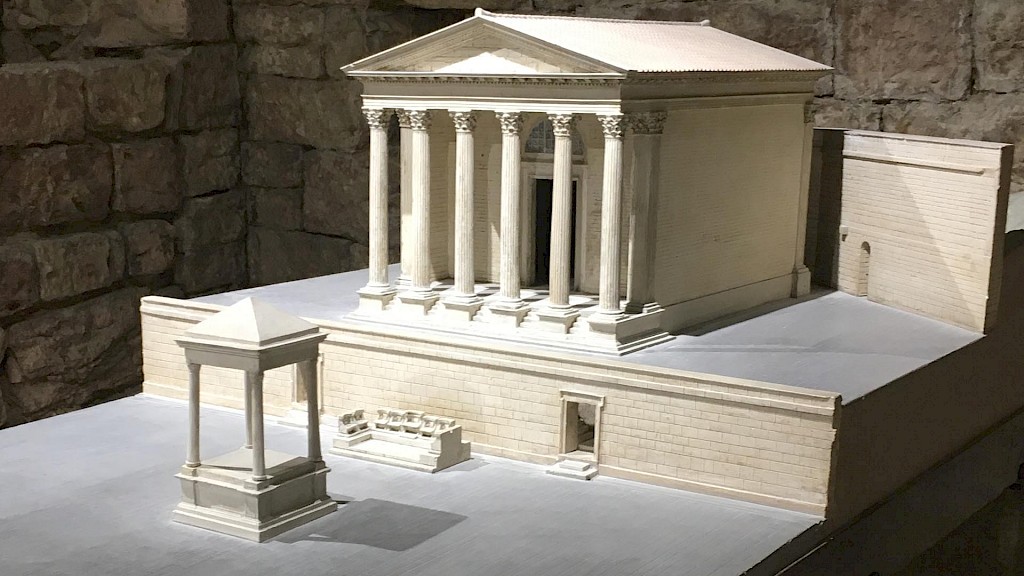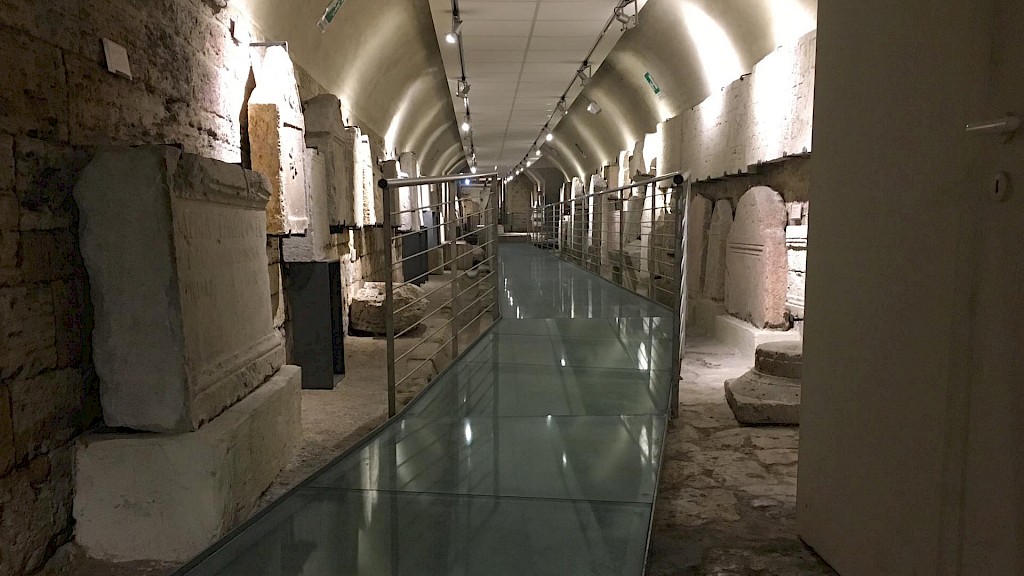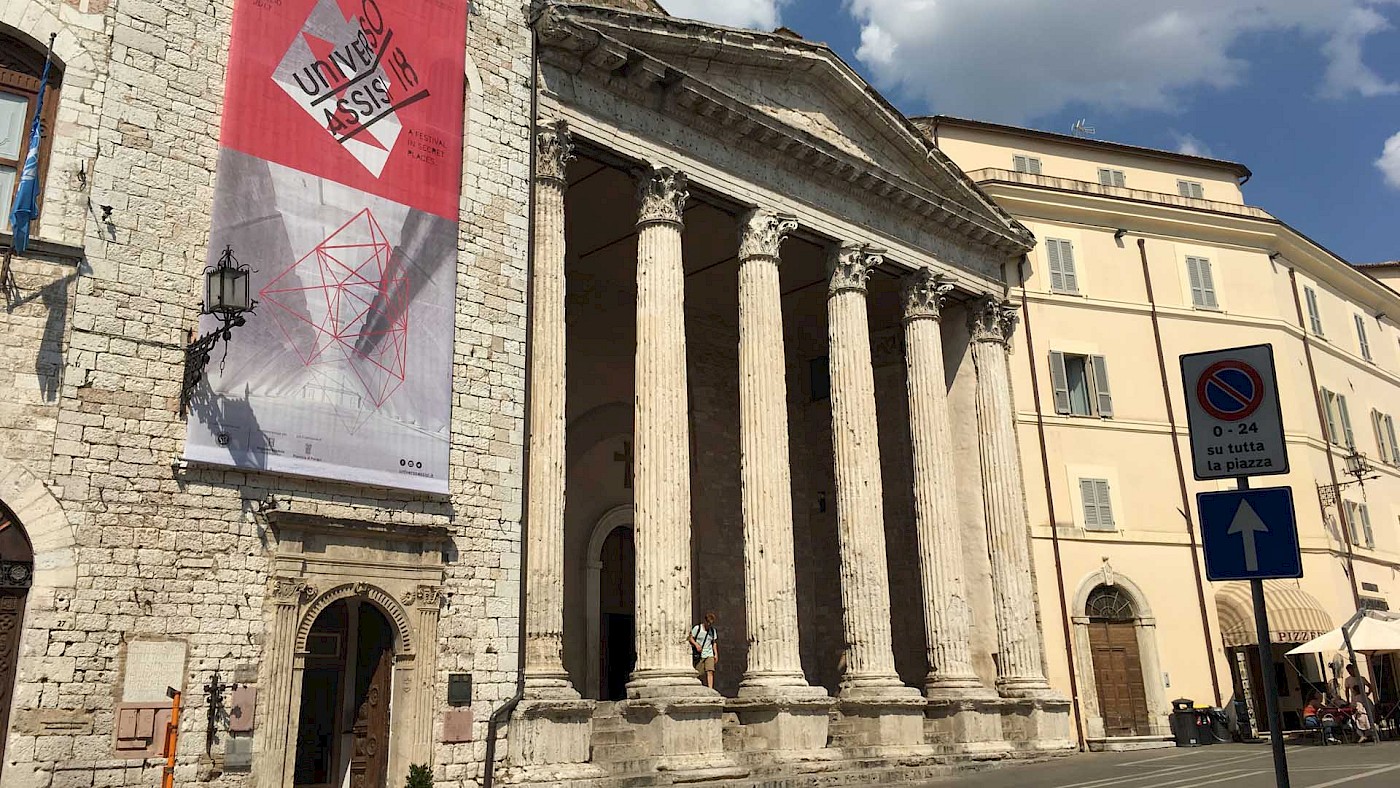Assisi is one of many hilltop towns in Umbria, the land-locked region in Central Italy that easily rivals bordering Tuscany when it comes to geographical beauty.
The town is best known for being the place where Saint Francis (Giovanni di Pietro di Bernardone) was born in the late twelfth century AD. He was also buried here and his tomb is a place of pilgrimage. Especially during the summer, you’ll run into large numbers of tourists, pilgrims, and monks.
But Assisi also has some interesting Roman remains. Some of these are still visible, such as part of the Roman walls, the remains of a (small) fort, a theatre, and an amphitheatre. Ancient Asisium was a small, but thriving settlement.
The heart of ancient Assisium
In the centre of Assisi, located on the Piazza del Comune, is a large Roman temple. The structure was built in the late first century BC. We’re not exactly sure to which deity the temple was originally dedicated: it’s referred to as the Temple of Minera, the Roman equivalent of the Greek Athena, goddess of wisdom and protector of cities, but this identification isn’t certain. Some have suggested that it was perhaps dedicated to Hercules, the Graeco-Roman demigod. (The only evidence for who the temple was dedicated to comes in the form of statues that have been recovered from the site.)
Roman temples differ from ancient Greek temples in that they very deliberately focus attention to the front. Whereas a Greek temple can be approached from any angle, with steps all around, a Roman temple is built on a relatively high podium, with steps only at the front of the structure leading to the temple’s interior.
As such, Roman temples are more easily integrated into the layout of a busy town like Assisi, where more recent structures have built right up to the sides of the Roman temple that must once have been freestanding. This has ensured the survival, at least in part, of quite a few Roman temples.
While the facade of the ancient temple has been preserved, the interior structure was demolished in the sixteenth century to make way for a church. While nothing of the original cella remains, the interior of the church gives some idea of the scope and dimensions of the inside of the original temple.

The temple was originally located on the forum of Assisium. The main part of the forum was located a little lower, with two flights of steps, on more or less on either side of the temple, connecting the lower terrace with the upper one on which the temple was built.
Assisi underground
Fortunately, you can actually visit the remains of the Roman forum located underneath Piazza del Comune. “Assisi Underground”, which functions as the town’s archaeological museum, can be accessed through the Romanesque crypt of the former church of San Nicolò “de platea”.
The remains of Assisium’s ancient forum include a monumental cistern, a podium with seats for magistrates, a small tetrastyle temple dedicated to the Dioscuri (Castor and Pollux), a monumental fountain (where the ancient inhabitants could get fresh water), and the remains of a few shops.

Within the underground complex, a tunnel leads to the tetrastyle temple, dating back to the first half of the first century AD. It was one of the last things built when the inhabitants of Assisium remodelled the heart of their town, a project that took about a century to complete. Today, only the base of this temple remains; the walls and roof are of later date.
Interesting is the inscription on this small temple that has been preserved. It gives the names of the people who funded its construction as Galeo Tettienus Pardalas and his wife (or mother?) Tettiena Galene. The cognomen “Pardalas” suggests that the man was of Greek origins, perhaps a freedman who had made his fortune and had risen to become an important individual in Assisium.
Assisi is yet another Umbrian town that is definitely worth seeking out. The temple of Minerva and the underground museum won’t take too long to see, leaving you ample time to enjoy the many other sights that the town has to offer, including its many churches.
